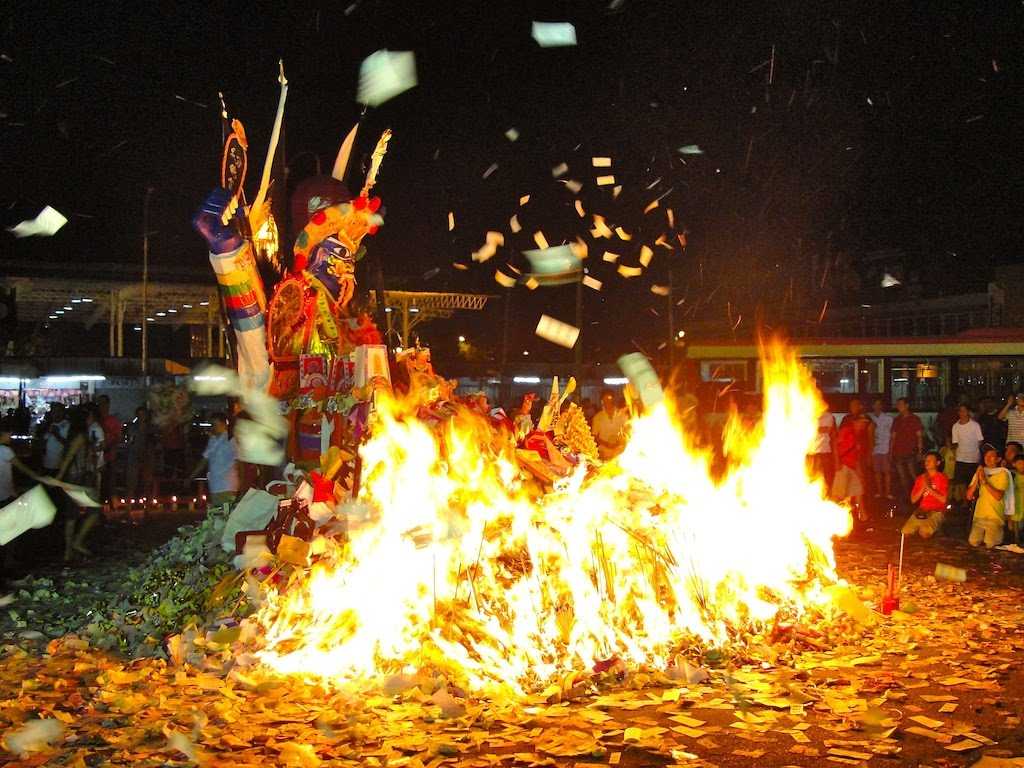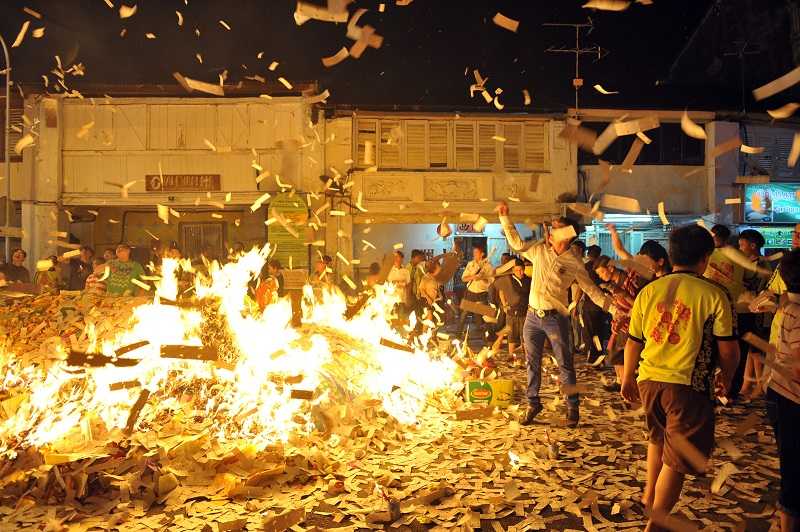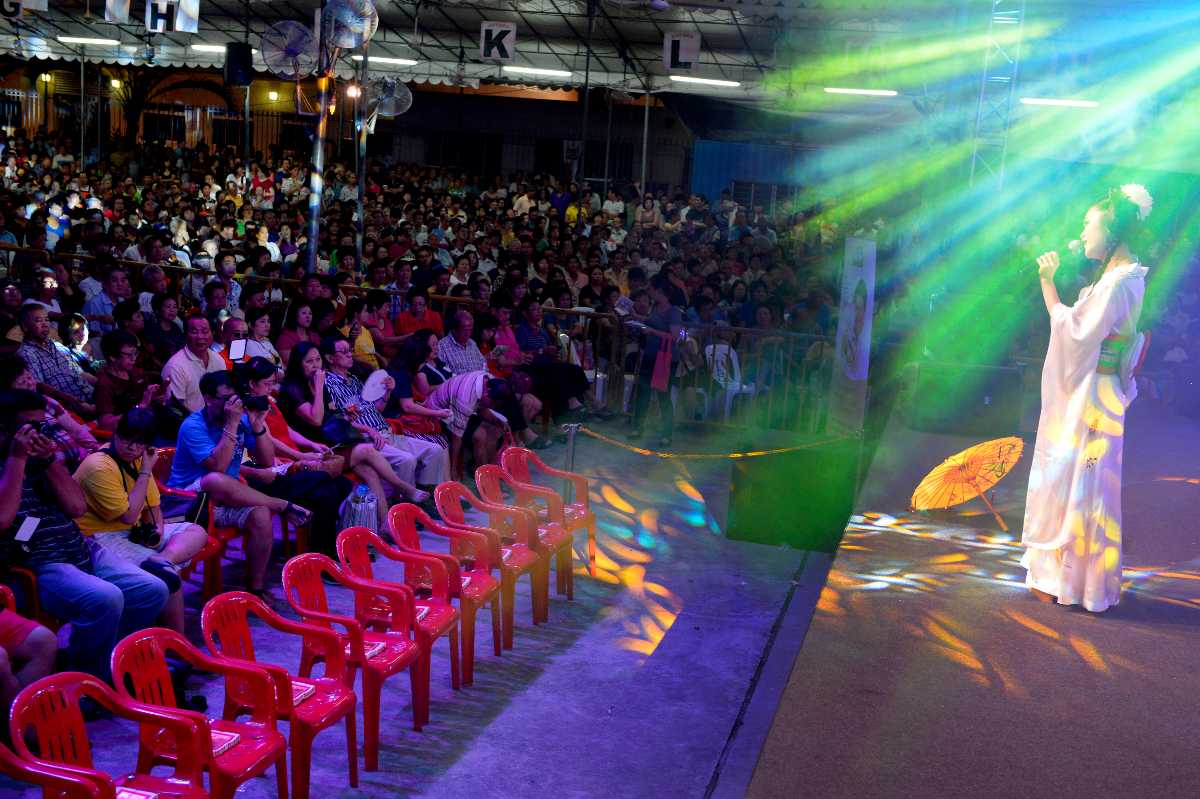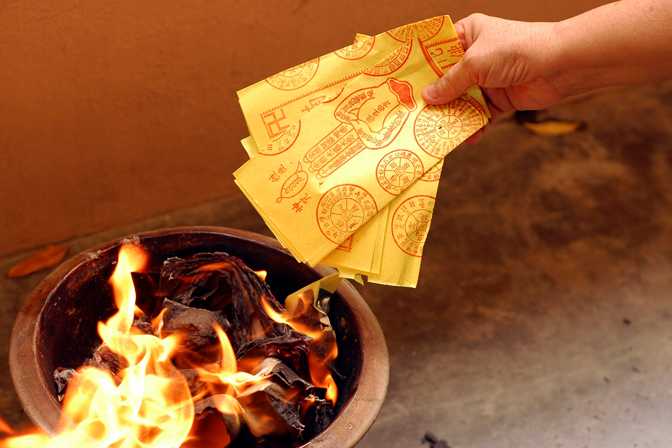Hungry Ghost Festival
Hungry Ghost Festival, Singapore Overview
The Hungry Ghost Festival is a religiously significant festival in Singapore that takes place during the seventh month of the lunar calendar. It is a month-long festival in which Buddhist and Taoist devotees perform rituals and offer prayers and foods to the wandering spirits. During this month, the living pay tribute to the deceased ones and the entire Lion City becomes lively with entertainment shows and traditional events. In 2025, the festival will be celebrated on September 6.
Also known as the Yulan Festival, Gui Jie, or the Zhongyuan Jie, this festival is an attestation to the fact that the hyper-modern city is still in touch with its rituals and traditions. Devotees and curious travellers are bound to have a grand time at this festival. With joss sticks filling up the air with fragrance to papier-mâché items burning all over Chinatown, there are numerous ways in which the Hungry Ghost Festival offers a unique experience to all the visitors. Along with that, the ritualistic food offerings and entertainment shows are also worth exploring. During this festival, the locals abide by a set of rules as there are many taboos associated with this traditional festival.
Read More on Hungry Ghost Festival
Hungry Ghost Festival Dates 2025
Dates for 2025
Sat, 6 Sept, 2025
Origin of Hungry Ghost Festival
To this, the Buddha replied that if Moggallana offers food to the monks and nuns after their retreat from the summer journey, they will pray for the benefit of seven generations of his deceased ancestors. In Moggallana's case, his mother was elevated from a hungry ghost residing in the Avici to a dog adopted by a wealthy family. She was further elevated to human status after her son presented new robes and food to 500 monks.

Celebrations
Through this month-long festival, Buddhists and Taoists perform a variety of rituals to appease the dead and wandering spirits. From prayers to purification rituals, there are plenty of traditions that the devotees perform. As part of the tradition, devotees enjoy dinner with their families while keeping a few chairs empty at the dinner table for the deceased ones. After the family dinner, they perform the appeasement ceremonies outside their houses by setting up altars and laying the offerings for the wandering spirits. The last ritual involves releasing the printed paper lanterns in the sky and floating lanterns in the streams to guide the wandering spirits to the underworld.
Offerings
Offerings are crucial parts of this ancient tradition in which people pay tribute to the dead. Through the month, people place offerings by the roadside and at the temples. People offer food items like raw noodles, fruits, peanuts, uncut meats, rice, pastries place them as offerings outside their houses. They build papier mache mobile phones, cars, and houses and burn them along with joss paper, popularly referred to as ghost money, to ensure the deceased ones have a prosperous afterlife.

What may very well be considered as the highlight of the Hungry Ghost Festival is the Getai, literally translating to 'song stage'. In addition to pleasing the phantoms with money and food, the Singaporeans also arrange for boisterous, entertaining performances for them. A grand stage is jazzed up with psychedelic LED lights for live shows which include melodious songs, exceptional operas, lively dances, excellent puppet shows and farcical stand-up comedy. In keeping with the traditions, the first row of the chairs arranged for the audience are kept empty as they are said to be occupied by the ghosts.

Dos & Dont's of Hungry Ghost Festival
1. House Renovations or Relocation
2. Swimming Pools
3. Killing Insects
4. New Beginnings

Places to Visit
Buddha Tooth Relic Temple & Museum
Buddhist devotees visit the Buddha Tooth Relic Temple & Museum during the month-long festival for purification rituals and religious services to honour the deceased ones. Head to the temple to witness the grandiosity of the Hungry Ghost Festival.
Lorong Koo Chye Sheng Hong Temple
This Taoist temple is a must-visit destination during the Hungry Ghost festival. Here you can enjoy various special performances as well as the local cuisine, vegetarian bee hoon. At the temple, an auction of unlucky items attracts huge crowds during the time of the festival.
Singapore Buddhist Lodge
Buddhist devotees flock in huge numbers to the Singapore Buddhist Lodge to honour their deceased friends and family members. They pray for the souls of the dead ones and offer food. Visit the place to get to experience the spiritual side of the Hungry Ghost festival.
